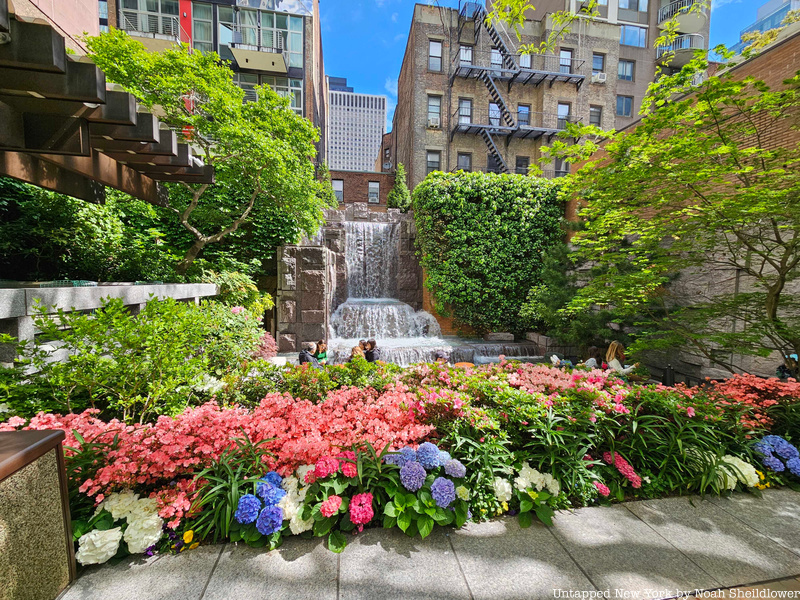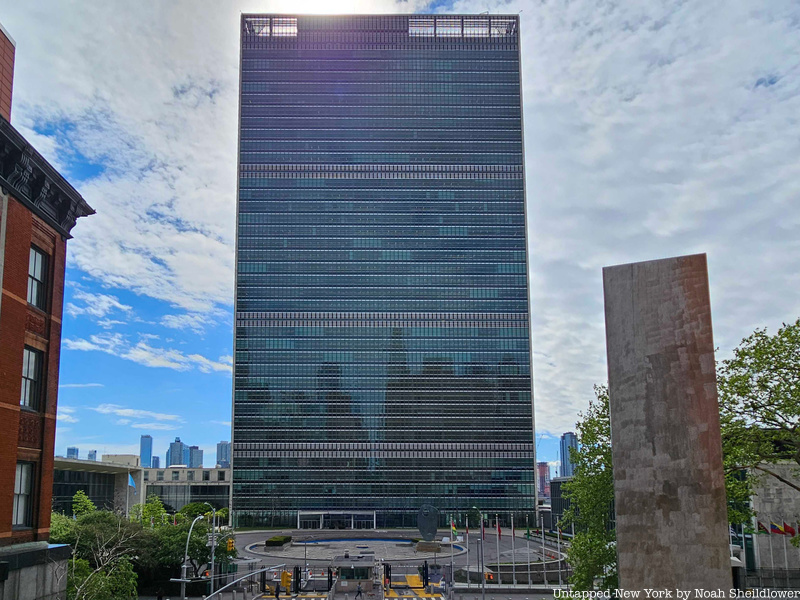
Turtle Bay: the home of the United Nations, secret waterfalls, ornate mansions, and slaughterhouse history. Located east of Lexington Avenue from East 43rd to East 53rd Streets, the neighborhood houses the Chrysler Building and dozens of UN missions, making it one of the borough’s most diverse neighborhoods. However, Turtle Bay wasn’t always the diplomatic powerhouse it is today; just a century ago, the area was filled with breweries and factories that pushed away many wealthier residents to other neighborhoods. Today, Turtle Bay features secrets on every block, from odd architectural gems to historic residences to just about every country’s flag blowing in the wind. Here are the top 16 secrets of Turtle Bay, Manhattan!
1. The United Nations has a subterranean complex, a piece of the Berlin Wall, and formerly a private apartment

The United Nations, perhaps the defining feature of Turtle Bay, houses many secrets behind its rather heavily guarded boundaries. For instance, the United Nations has a massive subterranean complex only accessible to delegates and staff. Offices, a gym, maintenance, and storage facilities are found on levels below what most people consider the “basement.” There is also a parking lot for UN vehicles and diplomatic cars on these lower levels. These levels (and the entire building) are technically in international territory and not in New York City. Additionally, the UN used to have a private apartment for the Secretary-General on the 38th floor of the Secretariat Building. Photos from the 1950s show a living room with large windows spanning the width of the room, a modest kitchen and bathroom, and a single bed in the bedroom.
Also hidden in plain site is a piece of the Berlin Wall, one of five sections located in New York. A Berlin Wall piece, which used to be at Potsdamer Platz, stands in the United Nations Sculpture Garden. It was gifted from Germany in 2002, presented by then-President of the German Bundestag, Wolfgang Thierse to then-UN Secretary-General Kofi Annan. The side facing the East River, “Trophy of Civil Rights,” depicts two people reaching over the top of the wall in an embrace. The other side of the wall, facing 1st Avenue, is a graffiti work made by German artist Kani Alavi, who has painted other sections along the wall’s East Side Gallery.





